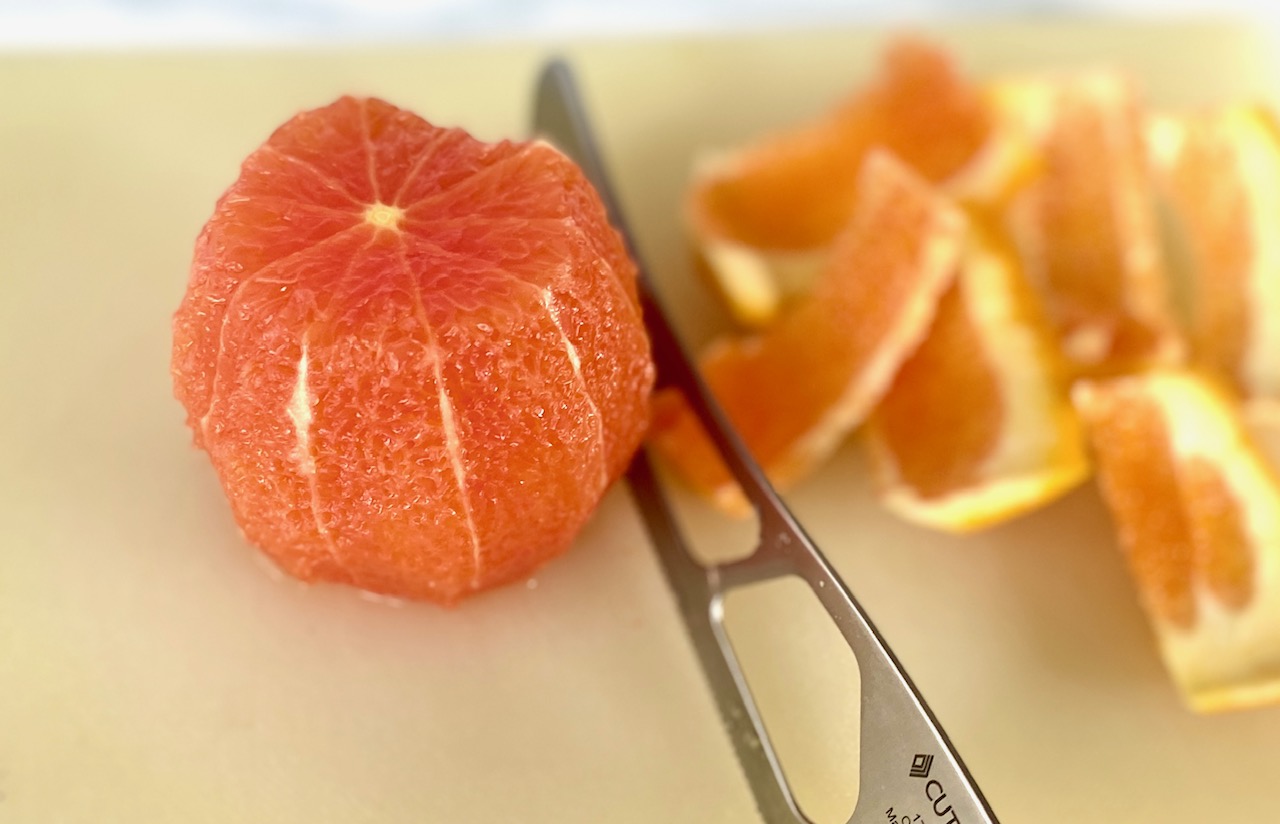
Want to learn how to Supreme or segment an orange?
Learn how to supreme an orange or any other citrus fruit (also called segmenting or sectioning) and you can make your salads look like they do at restaurants
You may have noticed when you eat in a restaurant that the citrus segments have no membrane or white pith on them. This makes them easier to eat and they look nicer too. The membrane can be papery and has no taste.
Jump to RecipeOnce you’ve practiced the “supreme” method a few times you will see how easy it is to do. Our step-by-step below with photos will help guide you.
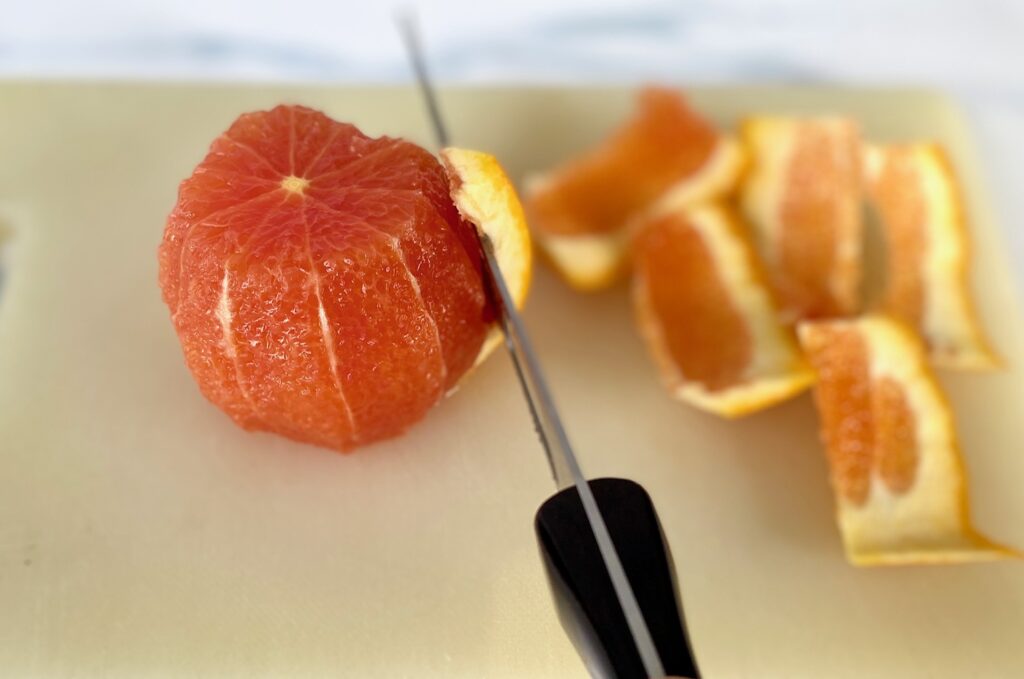
What does supreme the orange mean?
Supreming means you are removing the pith and membrane from citrus fruit so it can be served in slices. Any recipe that calls for citrus slices can benefit from this technique.
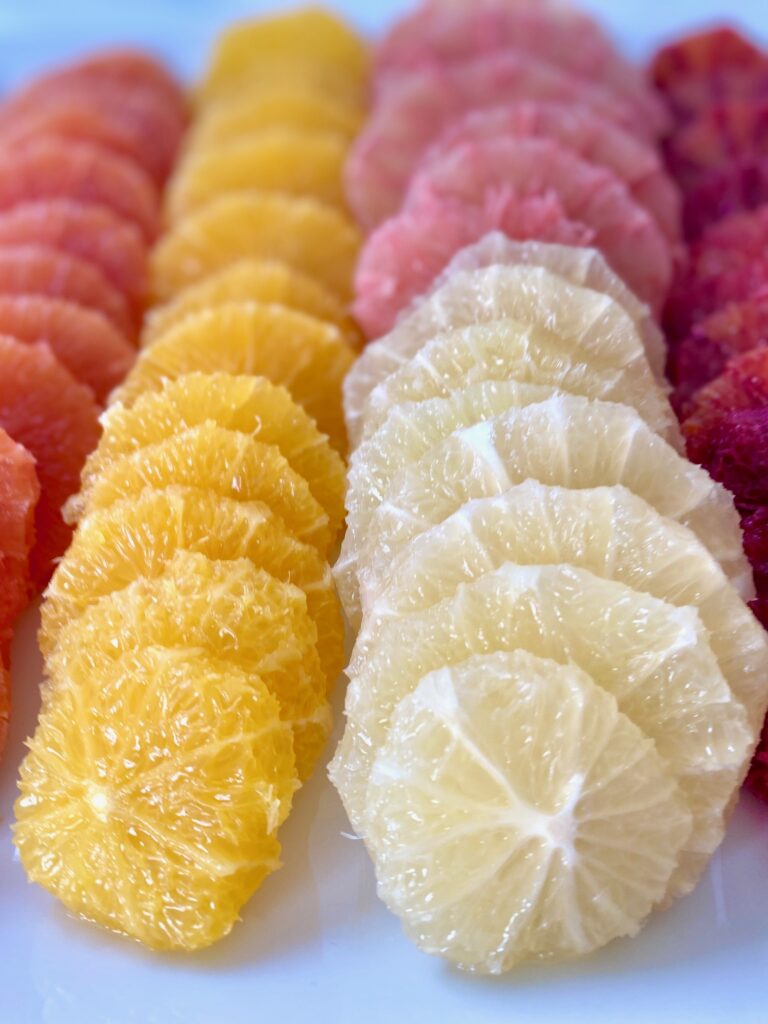
What is the membrane of citrus fruit?
The membrane is like a coat for the actual fruit segments or sections, inside the peel, helping hold the pieces together. The texture is thin and papery, and relatively easy to remove. You can remove the membrane from any orange, lime, grapefruit, or lemon.
Once removed the citrus segments are considered “Citrus Supreme”
Our Tricolore Salad is topped with perfect orange “supreme”
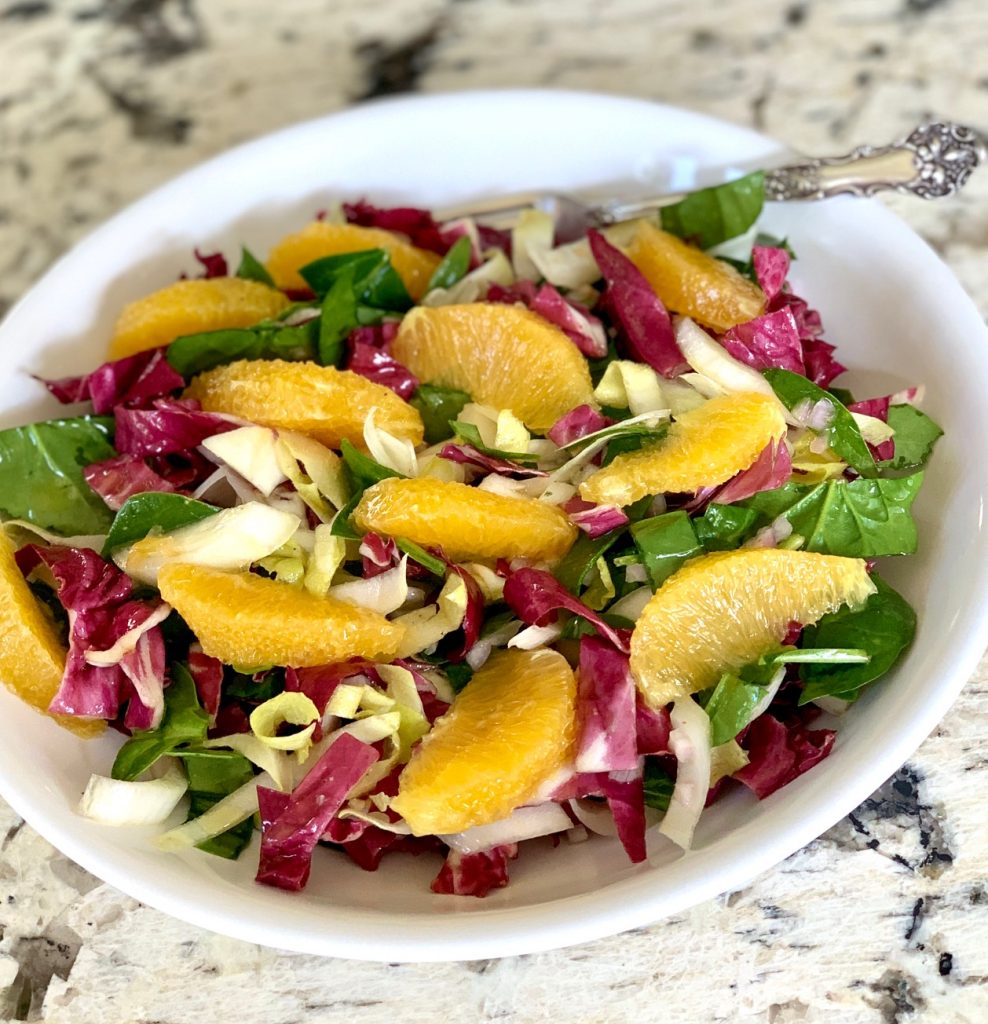
Step by Step on how to supreme or segment oranges or any citrus fruit:
Step 1:Cut off both ends of the orange
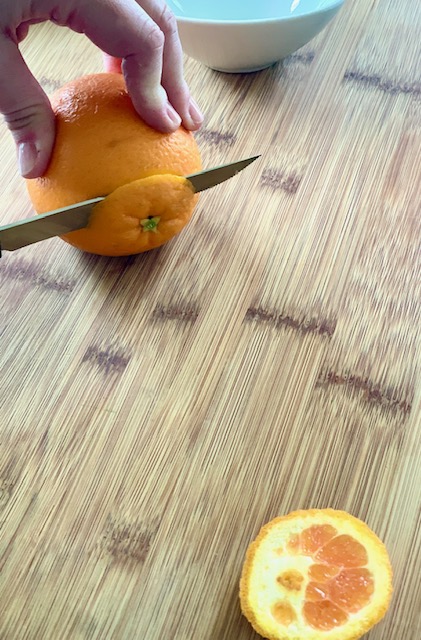
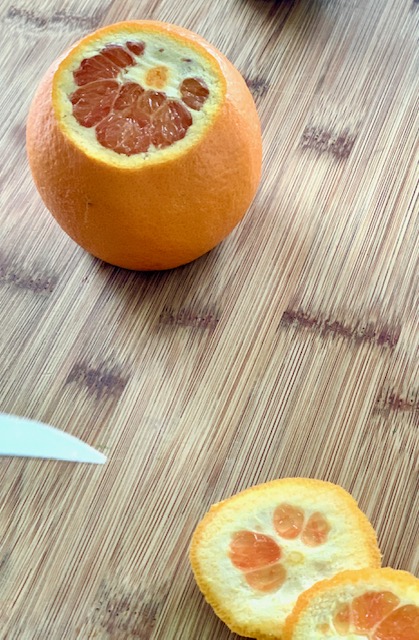
Step 2: Stand the orange upright, and with your knife, and cut downward to remove the peel and pith.
Follow the natural curve of the orange from top to bottom. Continue around the orange until all peel and pith are removed.
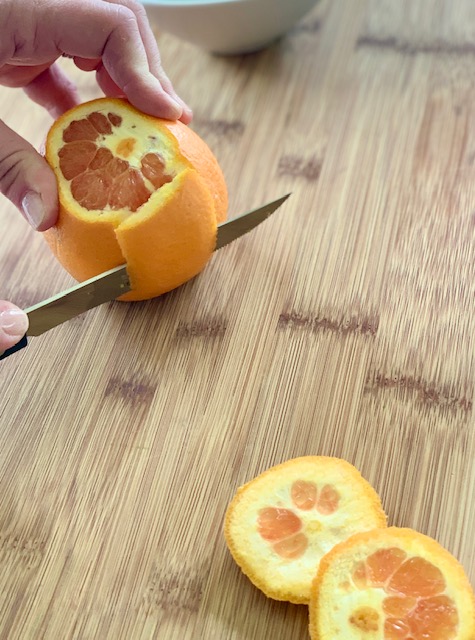
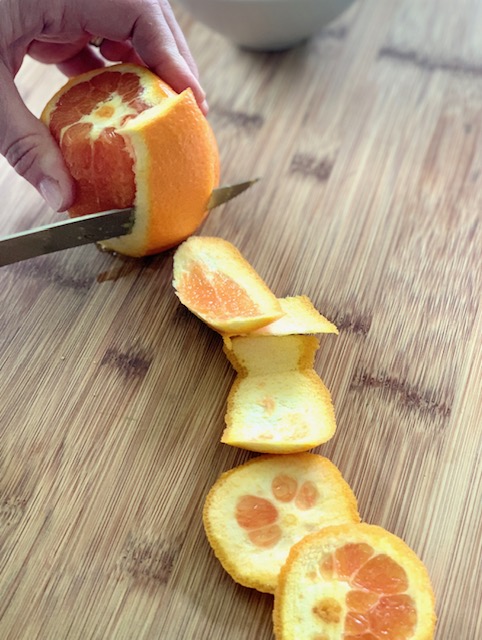
Step 3: Once you have removed the peel you can easily see the membranes between each segment. Slice on each side of the membrane to remove the segment.
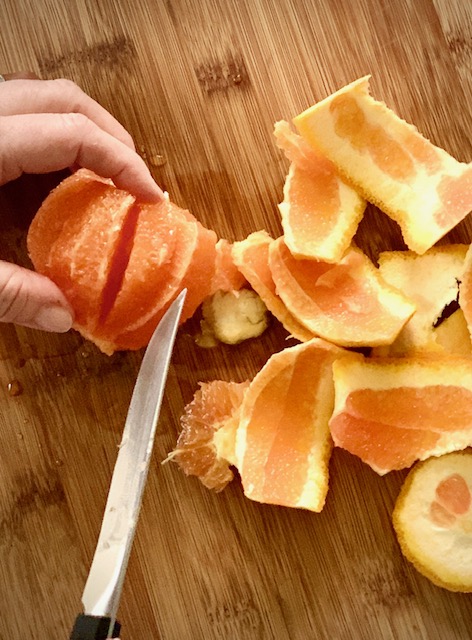
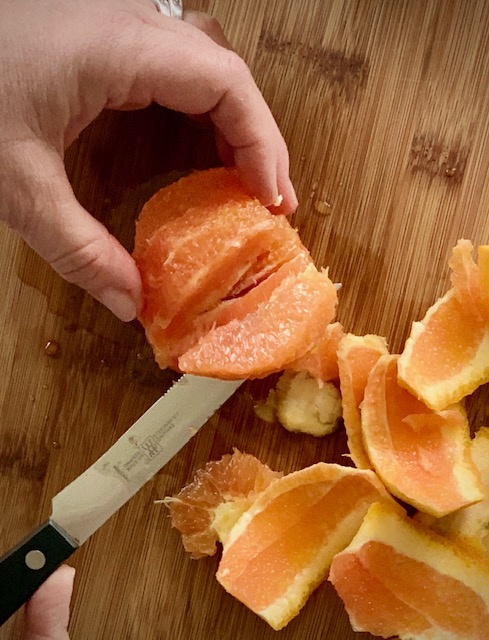
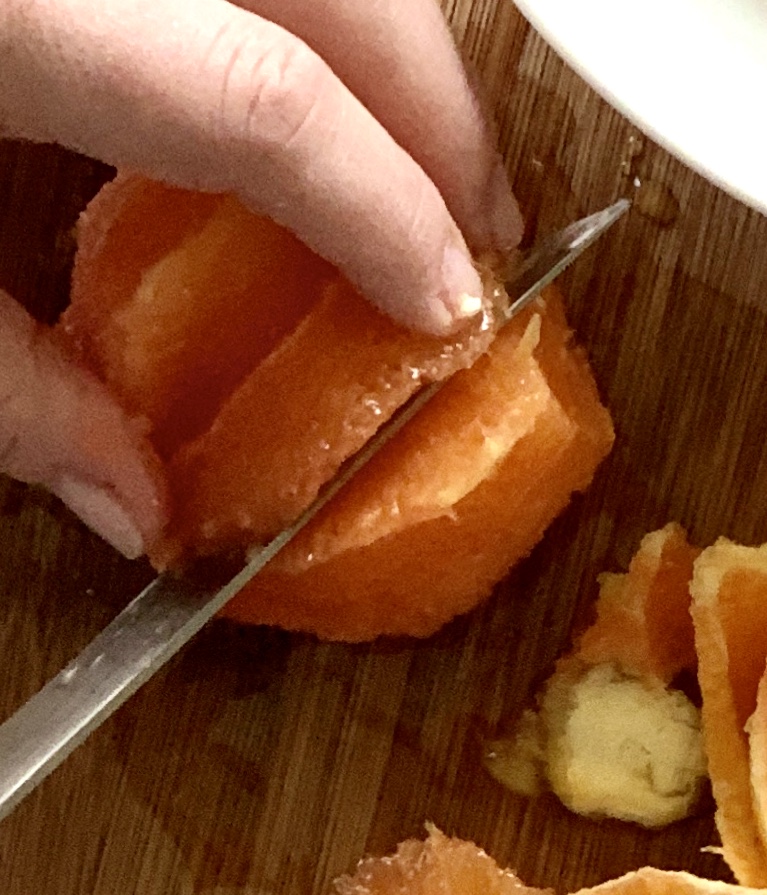
Step 4: Continue until each segment is removed
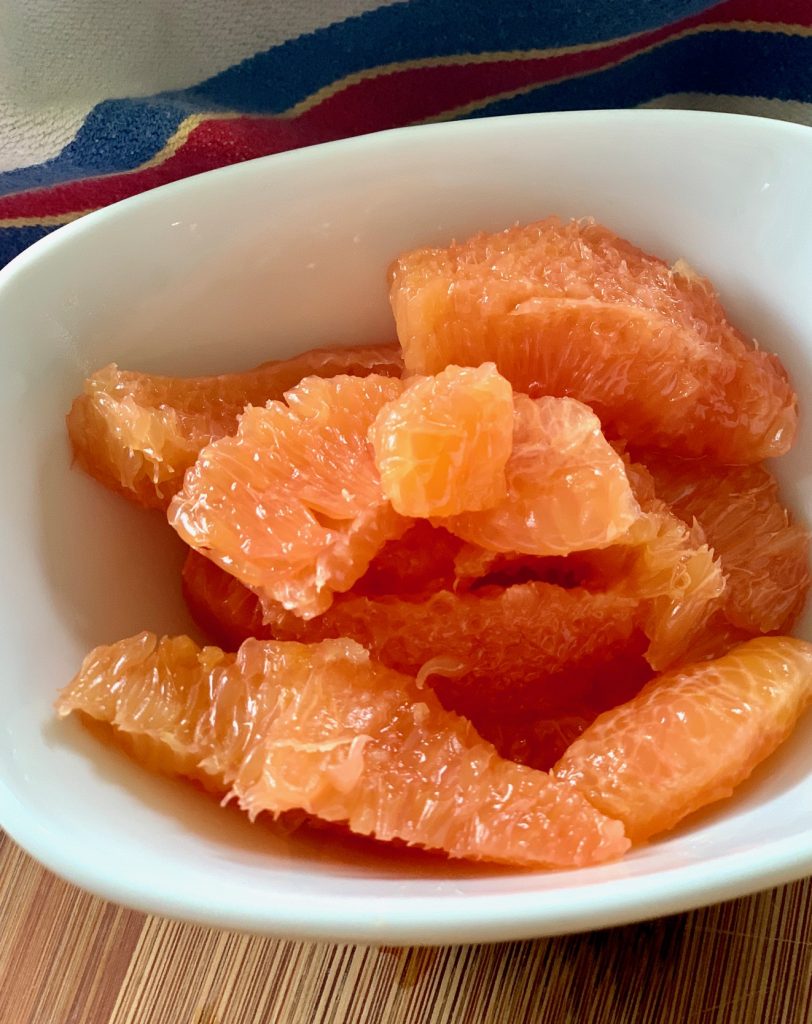
Pro Tips for Segmenting Citrus:
- Use a very sharp knife. We recommend a serrated knife with a sharp tip
- Cold citrus is easier to cut and segment
- Navel, Valencia, and Blood Oranges are easiest to segment because they are firmer. Softer oranges, such as Cara Cara, Mandarins, and Satsumas can be segmented but it can be harder to get a clean cut.
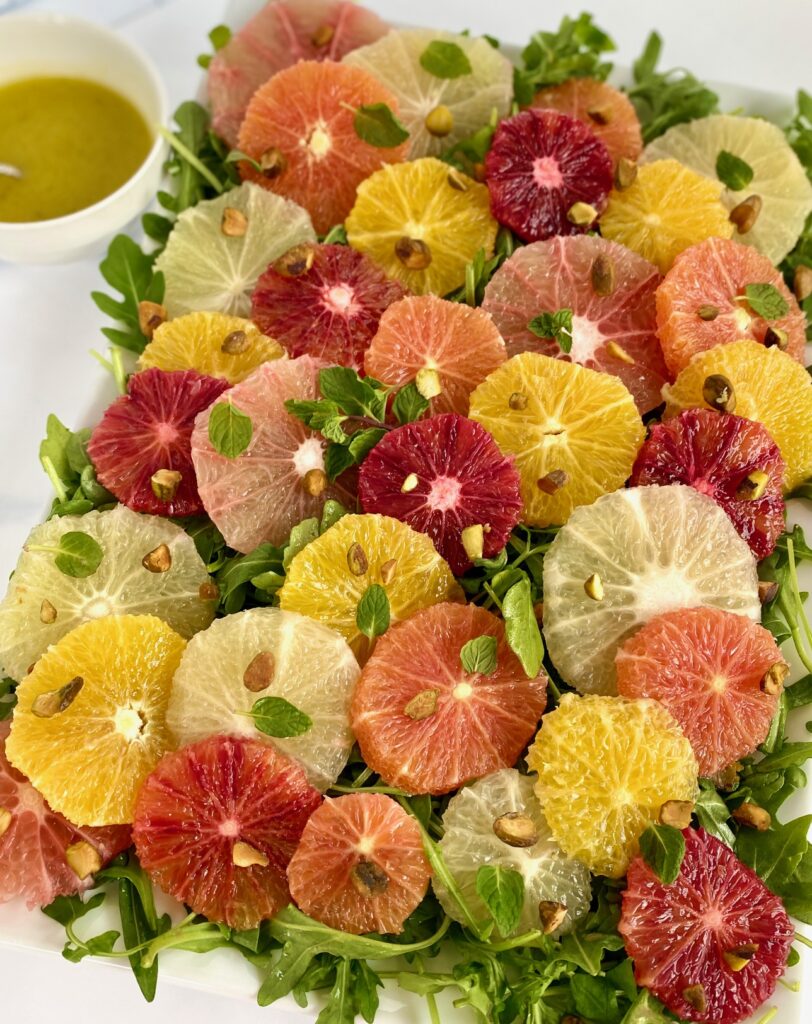
Other Salads and Vinaigrette Dressing recipes to try:
- Tricolore Salad with Oranges topped with Lemon Champagne Vinaigrette
- Our Arugula Beet Avocado Salad uses orange segments too
- Try our Classic Champagne or Balsamic Vinaigrettes or our Lemon Vinaigrette Dressing.
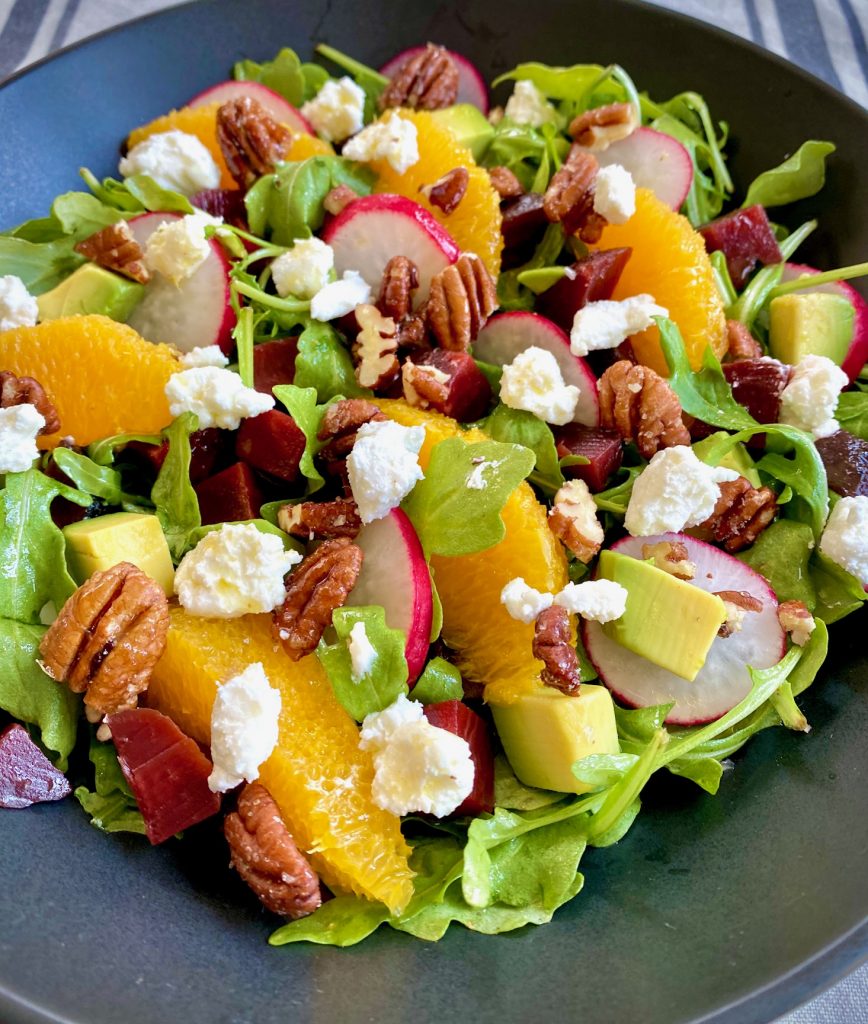
Want to Save This Recipe?
Enter your email & We’ll send it to your inbox. Plus, get great new recipes from us every week!
By submitting this form, you consent to receive emails from The Art of Food and Wine.
How to Supreme an Orange (or any citrus fruit)
Equipment
- Serrated knife
Ingredients
- 1 cold orange, Navel, Valencia, Blood Oranges or any cold citrus
Instructions
- Step 1: Cut off both ends of the orange so it sits flat on the cutting board
- Step 2: Stand the orange upright and with the knife cut downward to remove the peel and the pithFollow the natural curve of the orange from top to bottom. Continue around the orange until all peel and pith are removed.
- Step 3: Once all peel is removed you can easily see the membrane between each segment. Slice on each side of the membrane to remove each segment individually.
- Step 4: Continue until each segment is removed
Notes
- Any citrus will work for this method
- Cold citrus is easier to cut and segment
- Navel, Valencia, and Blood Oranges are easiest to segment because they are firmer. Softer oranges, such as Cara Cara, Mandarins, and Satsumas can be segmented but it can be harder to get a clean cut.



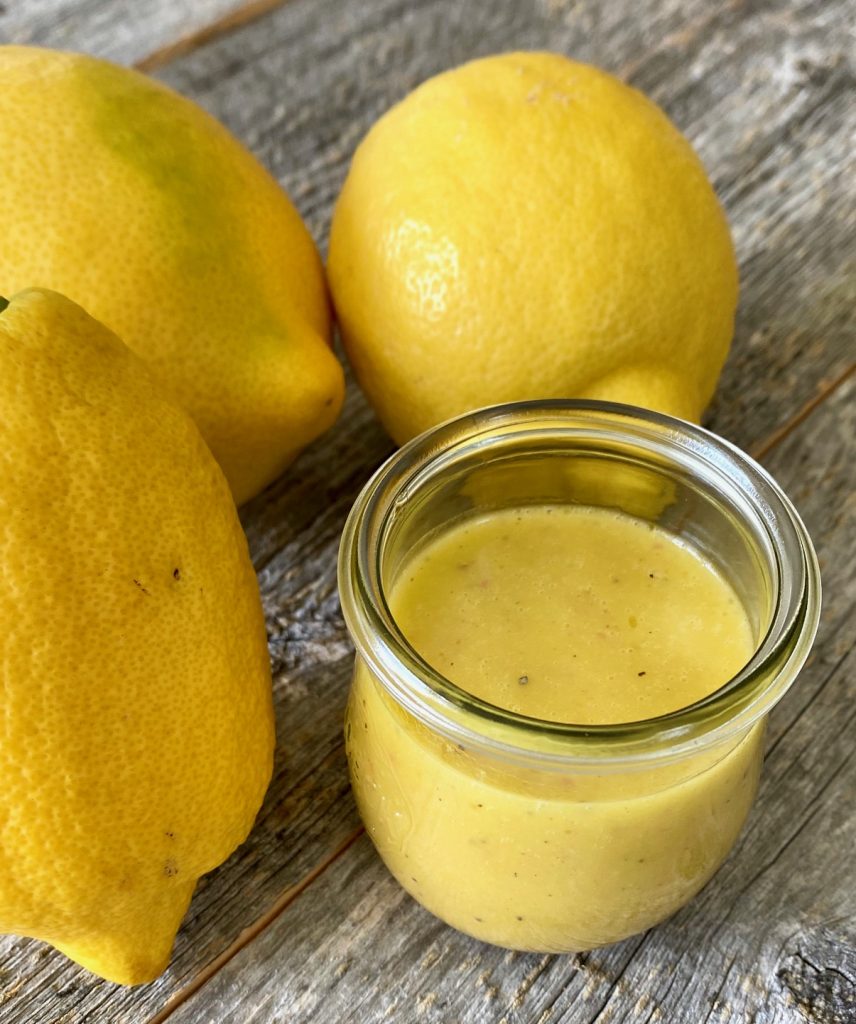

Debbie
Perfect for old fashion ambrosia:
Supremed oranges, fresh grated coconut and good quality jar cherries with a little of the juice. Simple, easy and good. I make it every Christmas with good Louisiana grown naval oranges.
Cyndy
Fantastic idea! Thanks for sharing!
Therese
I would not recommend a serrated knife. After cutting off the top and bottom and then the rest of the peel as you describe (but with a sharp, non- serrated knife). I use a small, thin, paring knife. Slip it in close to the center and pull up to the outside. After the first section is removed, the rest just need to be separated with the paring knife on one side and then I use the back of the knife to pull/roll the other side away from the white skin. That way, less cutting and losing that precious orange “meat”.
Cyndy
Thanks for your feedback. I love the results with a serrated knife, but I’m sure your paring knife method works great, as well.
EMW
Glad I’m not the only one that (until now I thought I was crazy) peels of the membrane. The only difference is the peeling of the rind. I also cut both ends, but then I score it with 2 vertical lines parallel to each about an inch apart. Then peel it normally. Oh, I also should admit something. It takes me upwards of 20 minutes before I even get to the part where I actually each the thing. I have this “OCD” of getting all of the white spongy stuff. Other than it being tasteless or bitter? I can’t, for the life of me, explain why I do it. It’s my “Catcher in the Rye” disorder I guess. Something in my brain makes me do it. Oh well. Thanks for sticking around to listen to my story. Bye
Jayne
Sounds like a great method too – thanks for sharing!
Anita
A lovely guide for preparing citrus indeed. This is how I prepare my citrus for salad as well. 🙂
Jayne
Thanks Anita – I love the way the oranges look when supremed!
Chenée
So glad that I found this! I’ve always wanted to know how to wedge citrus for salads 🙂
Jayne
Great! And it’s so easy once you try it
Julia
Thank you for sharing these helpful tips and tricks. I love citrusy salads and now it’s going to be easier for me to prepare them:)
Jessie
Thank you for this! I love oranges but I hate when the white stuff wont come off.
Irina
What a useful post it is! Sometimes I make desserts, and I need to supreme oranges. I am learning and sharing with my family! Thanks.
Jayne
Thanks Irina!